SpringCache 分布式缓存的实现方法(规避redis解锁的问题)
CTRA王大大 人气:0简介
spring 从3.1 开始定义
- org.springframework.cache.Cache
- org.springframework.cache.CacheManager
来统一不同的缓存技术
并支持使用JCache(JSR-107)注解简化我们的开发
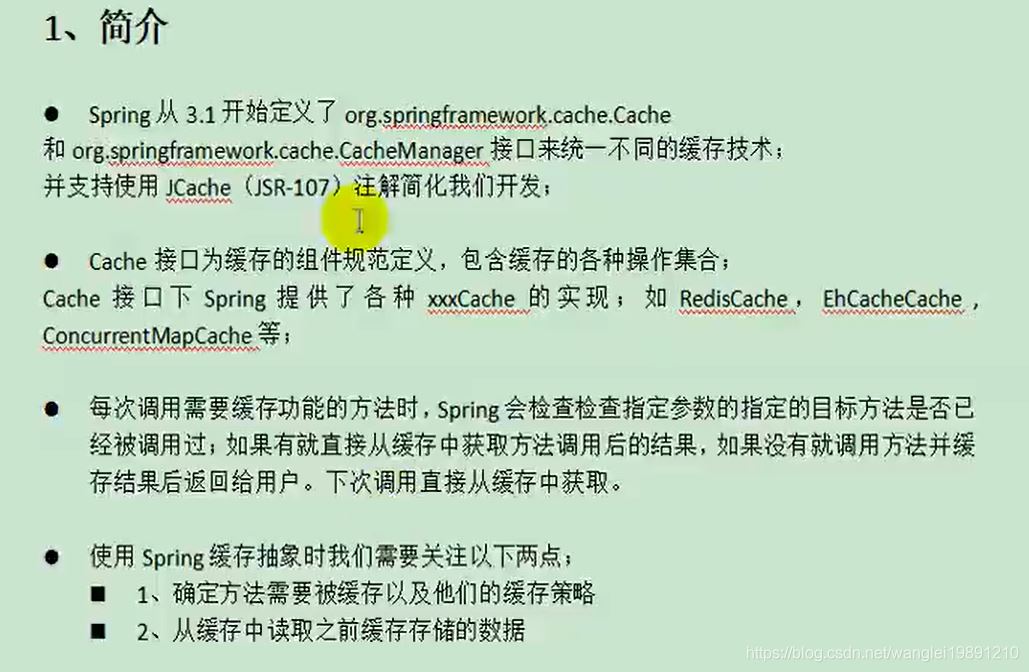
基础概念
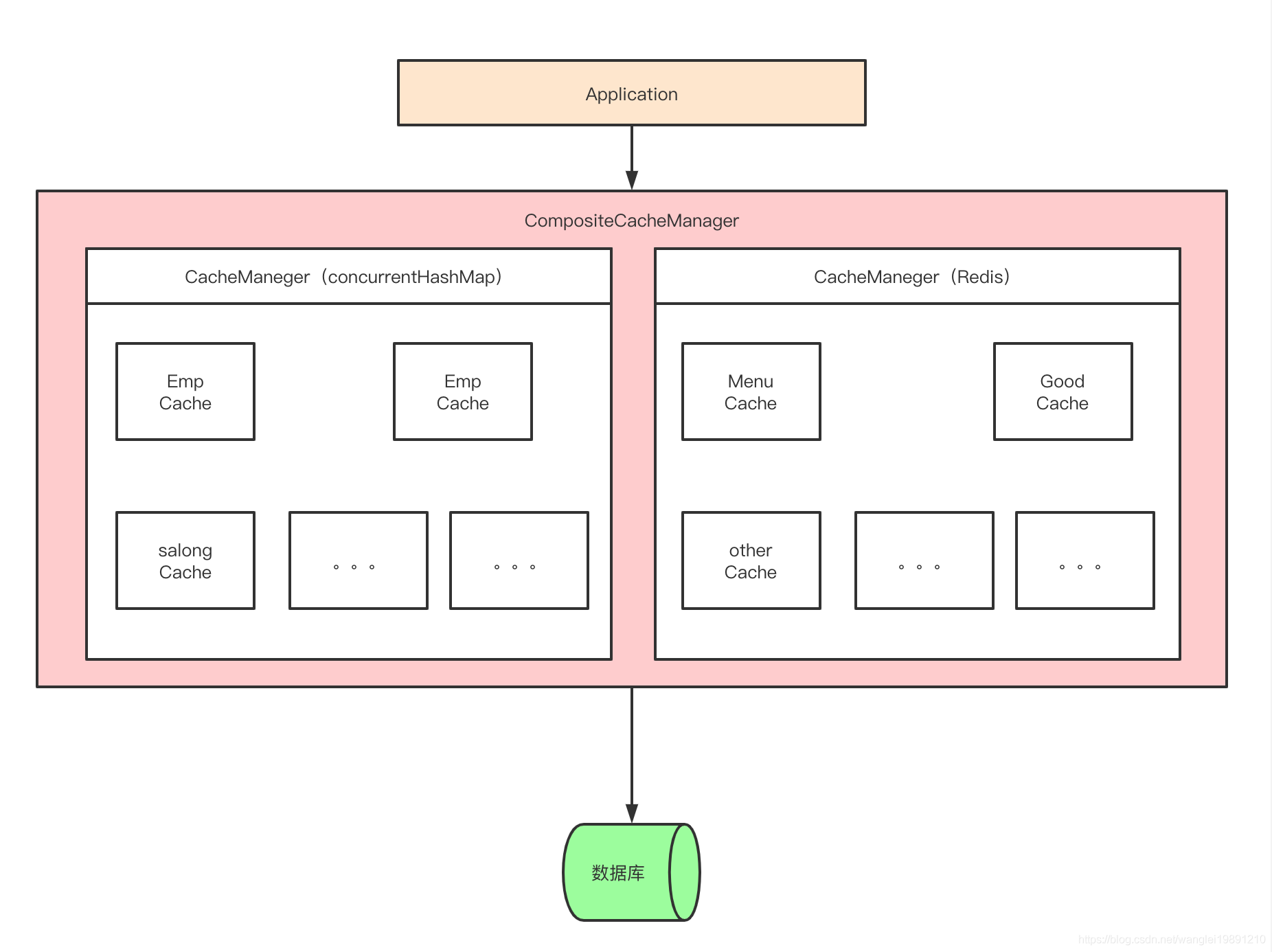
实战使用
整合SpringCache简化缓存开发
常用注解
| 常用注解 | 说明 |
|---|---|
| @CacheEvict | 触发将数据从缓存删除的操作 (失效模式) |
| @CachePut | 不影响方法执行更新缓存 |
| @Caching | 组合以上多个操作 |
| @CacheConfig | 在类级别共享缓存的相同配置 |
| @Cacheable | 触发将数据保存到缓存的操作 |
方法
1)、开启缓存功能 @EnableCaching
2)、只需要使用注解就能完成缓存操作
1、引入依赖
spring-boot-starter-cache、spring-boot-starter-data-redis
配合redis使用
<!-- 引入 redis--> <dependency> <groupId>org.springframework.boot</groupId> <artifactId>spring-boot-starter-data-redis</artifactId> <!-- 排除 lettuce --> <exclusions> <exclusion> <groupId>io.lettuce</groupId> <artifactId>lettuce-core</artifactId> </exclusion> </exclusions> </dependency> <dependency> <groupId>org.springframework.boot</groupId> <artifactId>spring-boot-starter-cache</artifactId> </dependency>
2、写配置
在项目新建config文件夹,新建一个config类

代码如下:
@EnableConfigurationProperties(CacheProperties.class)//为configuration容器中放参数
@EnableCaching
@Configuration
public class MyCacheConfig {
/**
* 配置文件中的内容不再生效(全部走自定义配置)
* @param cacheProperties
* @return
*/
@Bean
RedisCacheConfiguration redisCacheConfiguration(CacheProperties cacheProperties){
RedisCacheConfiguration config = RedisCacheConfiguration.defaultCacheConfig();
config= config.serializeKeysWith(RedisSerializationContext.SerializationPair.fromSerializer(new StringRedisSerializer()));
config = config.serializeValuesWith(RedisSerializationContext.SerializationPair.fromSerializer(new GenericJackson2JsonRedisSerializer()));
CacheProperties.Redis redisProperties = cacheProperties.getRedis();
if (redisProperties.getTimeToLive() != null) {
config = config.entryTtl(redisProperties.getTimeToLive());
}
if (redisProperties.getKeyPrefix() != null) {
config = config.prefixCacheNameWith(redisProperties.getKeyPrefix());
}
if (!redisProperties.isCacheNullValues()) {
config = config.disableCachingNullValues();
}
if (!redisProperties.isUseKeyPrefix()) {
config = config.disableKeyPrefix();
}
return config;
}
}
(1)、自动配置写了哪些 CacheAutoConfiguration 会导入 RedisAutoConfiguration 自动配置好缓存管理器RedisCacheManager (2)、配置使用redis做为缓存 spring.cache.typeredis
3、修改pom 配置
spring: cache: type: redis redis: # 缓存过期时间 time-to-live: 60000 # 如果制定了前缀,我们就是用指定的前缀,如果没有我们就默认使用缓存的名字作为前缀 key-prefix: CACHE_ # 是否使用前缀 use-key-prefix: true # 是否把缓存空值,防止缓存穿透 cache-null-values: true
4、原理
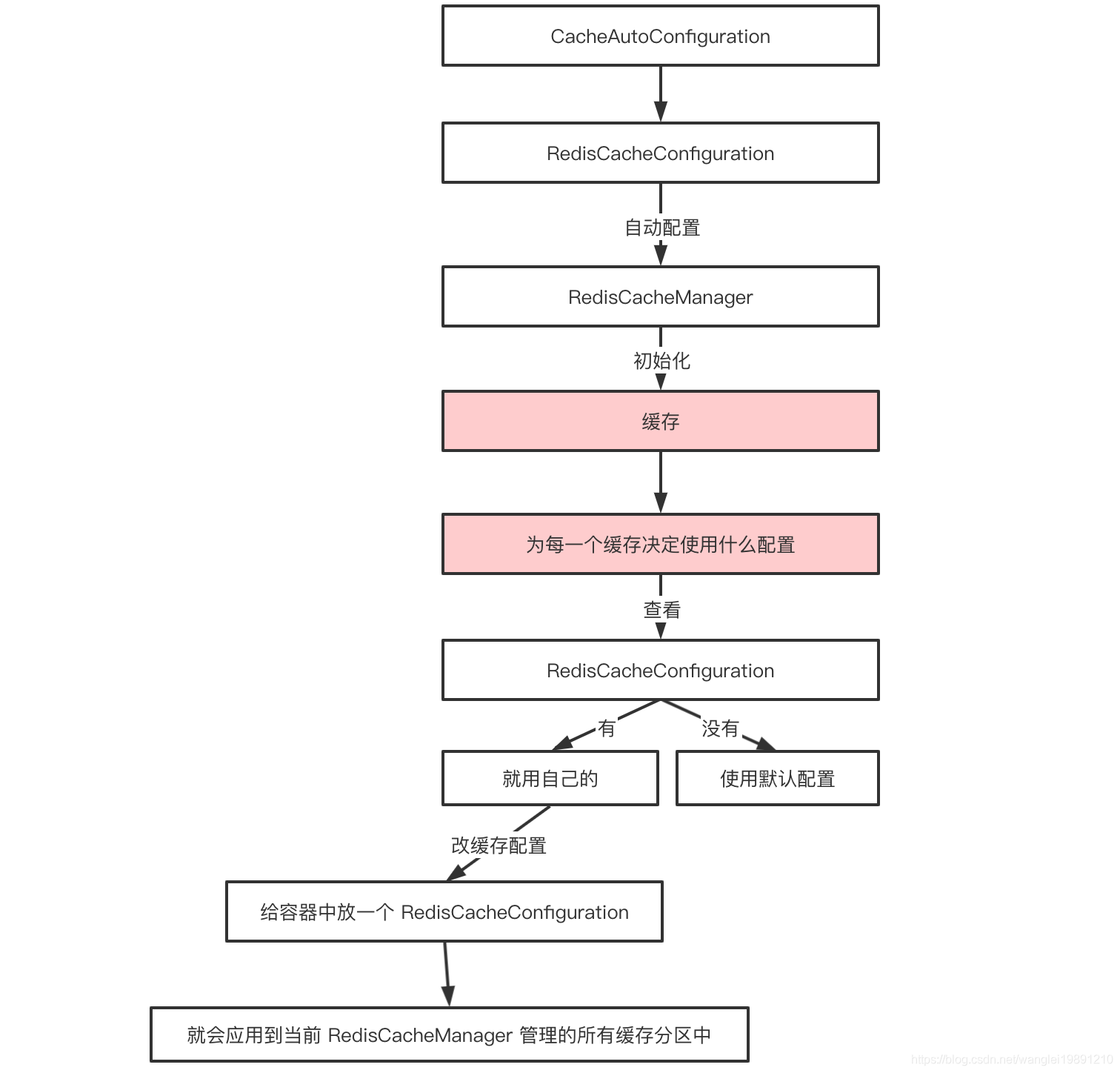
1、每一个要缓存的数据 我们都来指定要放到那个名字的缓存【缓存的分区(按照业务类型)】
2、@cacheable({"category"})
代表当前方法的结果需要缓存,如果缓存中,方法不用调用
如果缓存中没有,会调用方法,最后将方法的结果放入缓存
3、默认行为
1)、如果缓存中有,方法不用调用
2)、key默认自动生成:缓存的名字::SimpleKey[] (自主生成的key值)
3)、缓存的value的值。默认使用jdk序列化机制,将序列化后的数据存到redis
4)、默认 ttl 时间 -1 (永不过期)
自定义:
1)、指定生成的缓存使用的key: key属性制定,接受一个SpEL
SpEL(详见文档)
2)、指定缓存的数据的存活时间:配置文件中修改 ttl
3)、将数据保存为 json 格式:
自定义 RedisCacheConfiguration即可
失效模式:@CacheEvict
原理:变更缓存的时候会将redis中的缓存删除
(当下次查询时,会重新载入缓存)
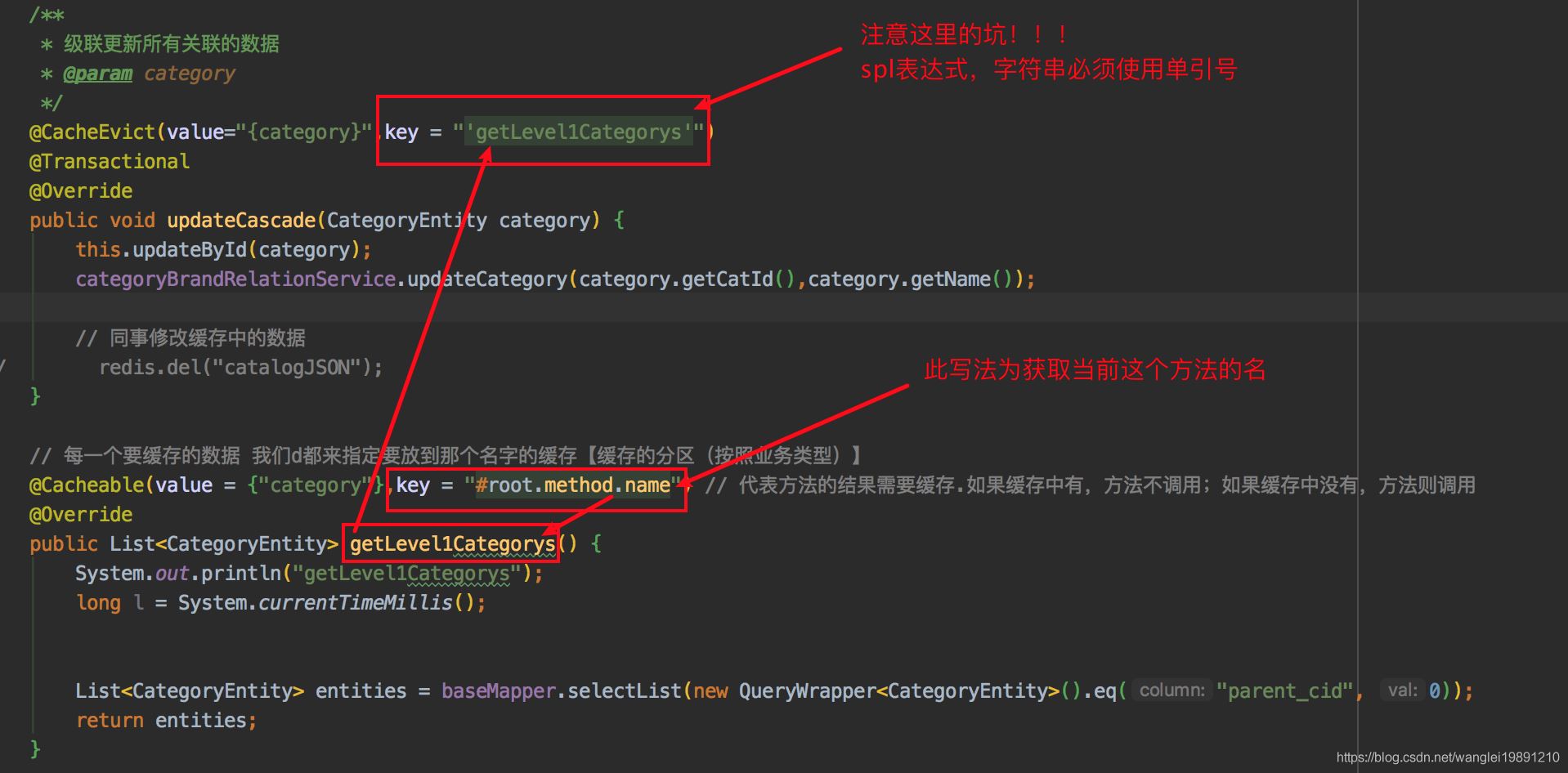
推荐使用@CacheEvict
同时进行多种缓存操作 @Caching指定删除某个分区下的所有数据
@CacheEvict(value=“category”,allEntries=true)存储统一类型的数据,都可以指定成同一个分区。分区名默认就是缓存的前缀
类中使用:@CacheEvict(value=“category”,allEntries=true)
配置中使用:(禁用前缀 + 默认前缀)
spring.cache.redis.use-key-prefix=true
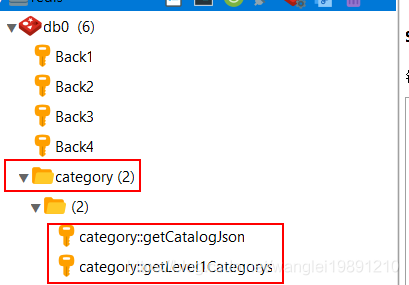
双写模式:@CachePut
原理:在变更缓存时,删除原有的缓存,然后将新数据重新插入到缓存中
加载全部内容